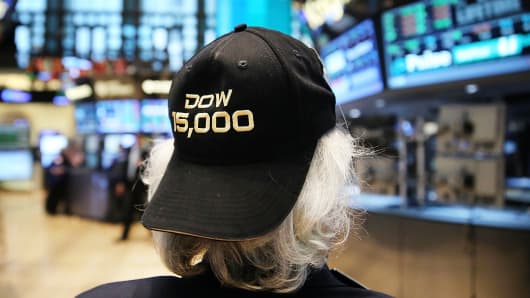This conversation reminded me of a presentation that I gave back in October, 2008. At that time, the S&P 500 had dropped over 35 percent from its highs in October 2007. In my presentation, I implored the audience to avoid making the emotional decision to sell out of stocks completely.
I talked about how difficult it can be to time the markets. I cited several studies that showed how missing only a few of the best days over a long period of time can be very destructive to long-term portfolio returns. I also quoted Ron Lieber of the New York Times, who said:
"By fleeing for the comfort of safe and insured, however, investors with a time horizon beyond a few years may be doing real damage to their long-term finances. If you're tempted to make a big move to cash right now, you're doing something called market timing. It's an implied statement that you've figured out the right moment to get out of stocks - and will also know the right time to get back in."
You may ask why I am recounting this story now, after the S&P 500 has rebounded over 140 percent from its low in March, 2009. The answer is that the same lesson applies in both bull and bear markets. Nobody can effectively time the markets with any degree of precision and consistency.
Trying to time the peak in any market cycle is no easier than trying to time the trough. Can anyone tell me with a straight face that they knew the S&P 500 would be flirting with all time highs right now given confluence of negative events that have unfolded across the world? How would you feel right now if you had decided to throw in the towel in March, 2009, in the hope of getting back in at a lower level?
Markets can behave in seemingly irrational ways, and these moves can last for long periods of time. Take the bond market, for example. Standard & Poor's downgraded the credit rating of the United States on August 5, 2011. Following the downgrade, the yield on the 10-year Treasury bond fell from 2.56 percent to 1.39 percent on July 24, 2012. This is exactly the opposite reaction that one might expect from a deterioration in issuer financial strength.
Earlier this week, S&P upgraded its outlook for the US government's long-term debt to "stable" from "negative". An effective upgrade such as this would normally be expected to lower borrowing costs for the US Treasury. However, the opposite seems to be occurring. The yield on the 10-year Treasury bond has increased sharply in recent weeks. Traders who were able to successfully predict either of these moves by S&P may have suffered losses as a reward for their work.
In an industry that has become increasingly obsessed with speculating for short-term results, we maintain our commitment to investing money for the long term. Our status as a "buy-and-hold" investment manager has garnered criticism over the years, but we think our long-term performance speaks for itself. Our commitment to buying high-quality and defensive companies operating in attractive industries has yielded positive investment results with low relative volatility. We will not change our stripes in an effort to satisfy near-term tempting trends and thereby sacrifice long-term performance. We hope that you won't either.




